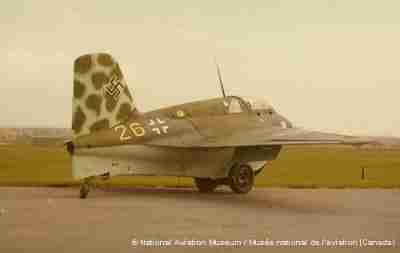Messerschmitt 163 Komet

|
The Messerschmitt Me 163 Komet (Comet) was a single-seat interceptor
that operated from 1944 to 1945. It was also the fastest and one of the
most radical airplanes of the war. In 1938 Professor Alex Lippisch
headed a project that produced the DFS 194 rocket test aircraft, which
became the predecessor of Me 163. Lippisch was transferred to
Messerschmitt in 1939 and the project transformed into one for a combat
aircraft. In August 1943 a prototype Komet was finished, powered by
the 1,705kg thrust of a Walter HWK 109-509 rocket. The Me 163B was a
small tailless aircraft that took off from a trolley and landrf on a
sprung skid. Sitting in a pressurized cockpit in the nose, the pilot
could fire two 30mm MK 208 cannon in the wing roots. Later in the war
the Me 163B's were equipped with 24 R4/M rockets which could shoot
down a B-17 Flying Fortress with a single hit. The Me 163 was a delightful combination of beautiful handling and unprecedented performance. In just over 2.5 minutes the Komet could climb steeply to 9,144m and then either intercept the bombers or glide for long periods to wait for the bomber formations. It was elusive and extremely difficult to catch; casualties usually resulted not from hostile actions but explosions and collisions on landing, when the two volatile and highly reactive rocket fuels were mixed together as the skid sustained the plane's weight during landing. Late models were equipped with a pressure cabin, a small auxiliary rocket for cruising, extra fuel tanks and a bubble canopy for all-round vision. |





